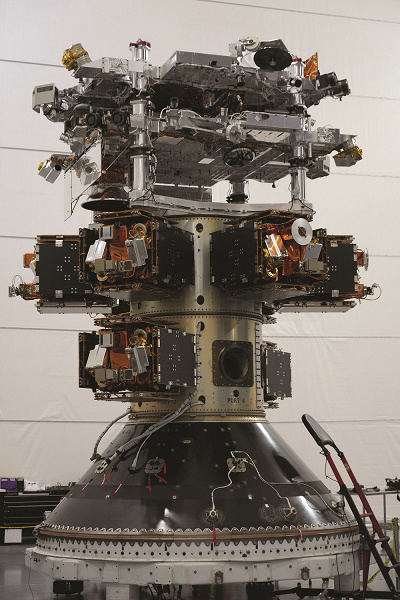SDA awarded York Space a $615 million contract for 62 satellites, making York SDA’s largest satellite supplier. The goal is to create a network of military satellites for global communications
The satellites are intended for part of SDA’s communications network known as Tranche 2 Alpha, SDA Director Derek Turner said on Oct. 19 at the MilSat Symposium in California. The network is expected to have about 100 satellites. A second supplier has also been selected to produce additional satellites for Tranche 2 Alpha, but the name of that supplier cannot be disclosed until contract negotiations are completed.
The agreement between SDA and York makes the company the largest satellite supplier to SDA, with 124 satellites on order to date. The contract value is $615 million and includes an incentive payment for on-time delivery.

SDA, an organization under the auspices of the US Space Force, is creating a network of military satellites. Tranche 2 Alpha will be used as a tactical network to transmit data around the world, including sensitive and sensitive data such as missile launch warnings. The Alpha satellites are equipped with optical communications terminals, Ka-band communications, and Link 16 data transmission. The launch is expected to take place in 2026.
York Space will create a network of satellites with global coverage for the Pentagon
Transport Layer Tranche 2 also includes 72 Beta satellites, which were recently ordered from Lockheed Martin and Northrop Grumman. They are equipped with more complex communication loads. The agency is working to acquire 44 more Gamma satellites for Tranche 2, but plans are currently under review. Gamma satellites require Advanced Tactical Datalink data to communicate with US tactical aircraft and other platforms.
SDA is also in talks with third-party supplier Beta to produce an additional 24 satellites that will have “some Gamma capabilities.”
The core constellation of what SDA calls the active military space spatial architecture project are small satellites provided by multiple vendors, all linked by optical laser communications. The architecture is expected to include about 500 satellites – 400 in the Tranche 2 Transport Layer and 100 in the Tracking Layer.
These satellites are expected to last about five years in orbit, so SDA will update the fleet of launched satellites every two years to replenish the vehicles and add new functions and payloads as they become available.
At the MilSat presentation, Turner mentioned the recent resistance that the Pentagon’s SDA has encountered due to its fast approach to acquisitions. He pointed out that the Department of Defense’s procurement culture still has difficulty adapting to commercial approaches such as those used by the SDA.
For example, the Pentagon’s cost accounting office recently asked the SDA to present its forecast procurement plans for the next 20 years. This is how the traditional procurement mechanism works, while the SDA tries to introduce new technologies in months or at least years instead of the decades that have become customary for large defense programs.



